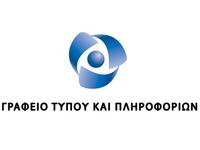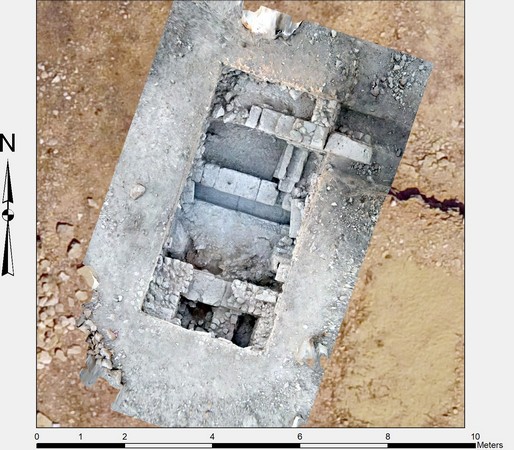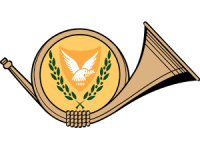Press Releases
17-02-2022 12:21
Polish excavations at Kato Paphos
Joint expedition of the University of Warsaw and the Jagiellonian University Kraków in collaboration with the Technological University of Warsaw
Season 2021
The Department of Antiquities, of the Ministry of Transport, Communications and Works, announces the completion of the 2021 excavations by the joint Polish expedition of the University of Warsaw and the Jagiellonian University of Kraków in collaboration with the Technological University of Warsaw, under the direction of Ewdoksia Papuci-Władyka. The expedition completed the second research season implementing the project: “MA-P Maloutena and Agora in the layout of Paphos: modelling the cityscape of the Hellenistic and Roman Capital of Cyprus”. Collaborating institutions are also the Warsaw Academy of Fine Arts and the Wrocław University of Technology.
In 2021, two study and excavation campaigns were carried out:
The Spring campaign (31st of March - 18th of July) with the participation of 17 people. Its aim was to study previously discovered materials and prepare them for publication, as well as completing the exploration of the trial trenches in the Maloutena area. We recall that Nea Paphos was founded on the Hippodamian plan, i.e. a regular grid of streets intersecting at right angles with building insulae. Indeed, one of the main issues on which the project is currently focused, is the verification of this street grid and the size of the insulae, which was proposed in the past.
Trial trenches TT.I and TT.II were designed to investigate the area of street no. 10 (between the Villa of Theseus and the House of Orpheus) and the intersections with two other streets. The completion of the research in these trenches gave not the expectect result, possibly because of the Roman period construction activity in this area.
During the spring campaign, the remote sensing documentation and inventorisation of architectural details was also completed. Conservators completed the maintenance of the remains of Roman legionnaire's boots (caligae) discovered in 2016 on Agora.
The summer-autumn campaign lasted from August 18th to October 17th, with the participation of more than 60 persons. The excavations’ focus was on verifying some key points in the city's street layout. Six newly-founded trenches were then explored: three in Maloutena area (TT.III, TT.IV, TT.V) and three (TT.XI, TT.XII, TT.XIII) in the Agora, aimed at discovering the remains of ancient streets and determining the length of the insulae. The goal was partially achieved, but the exploration of trenches TT. IV and TT.V in Maloutena, which were crucial for the estimation of the insulae width, were not completed. The results obtained in TT.III were important, where the oldest phase of usage is associated with the construction of the Hellenistic Street A. On the bottom of the trench, the well-preserved main street sewer, carved partially in the bedrock and originally covered by stone slabs, was found.
In the trenches opened at the Agora, the intended goals were also partially achieved. As a result, a channel was found in TT.IX situated to the S of the Agora, indicating that the street was running here. The aim of trench TT.XI was to attempt to capture the northern boundary of the North Portico and the street P supposedly flanking the square to the north. An important find came to light in this area, the lower part of the foundation of a large masonry structure, which could represent the northern line of the North Portico.
In TT.XII the main objective was to verify geomagnetic interferences which might suggest that the remains of the colonnaded street in the form of column bases were located here. This was indicated by the circular shapes of the signals distributed along the line of Street P, partly uncovered in the area of the Theatre by the Australian Mission. At present, it cannot be concluded that the results of the excavations at TT.XII have uncovered the remains of a street layout or insula. TT.XIII was delineated to define the eastern boundary of the East Portico of the Agora and its connection to the flanking street. The remains of a stone pavement, which may be a remnant of the street, was uncovered.
During the same campaign, preliminary conservation, elaboration and dating of the ceramic material discovered in the course of this campaign were also carried out, and work continued on the material discovered earlier.
Also, remote sensing and photogrammetric documentation was performed, as well as discussing on site with architects and archaeologists the assumptions and research questions related to the 3D reconstruction of the urban landscape of Nea Paphos in particular periods of its development, which is the main goal of the MA-P project.
Conservation and processing were carried out on coins discovered during the 2020-2021 seasons, at the Paphos Museum. Initial research and inventory of the conservation needs of the discovered architecture and features in Maloutena area were also made.
Finally, the collaborative archaeology activities related to the preparation of the cooperation with local communities, which will be implemented from 2022, were launched. The project was widely promoted in the Cypriot and Polish mass media. This was connected with the official visit of the President of the Polish Republic, Mr A. Duda with his wife, Ms A. Kornhauser-Duda, as one of the points of the celebration of the 60th anniversary of establishing diplomatic relations between Cyprus and Poland, with the participation of, among others, the UW Rector, Prof. A. Nowak and the Director of the UW Polish Centre of Mediterranean Archaeology, Prof. A. Obłuski. Work was also carried out on the establishment of the Polish Research Center in Paphos.
------------------------
Photos:
1. Maloutena TT.III, MA-P Archive
2. Maloutena TT.V, MA-P Archive
3. The visit of the President, MA-P Archive
(MV/ECHR)
Relevant Press Releases

19-04-2024 16:42
PIO e-mail Αlerts service is suspended


20-03-2024 11:43
Acceptance of postal items to Israel has resumed

.jpg)
.jpg)



